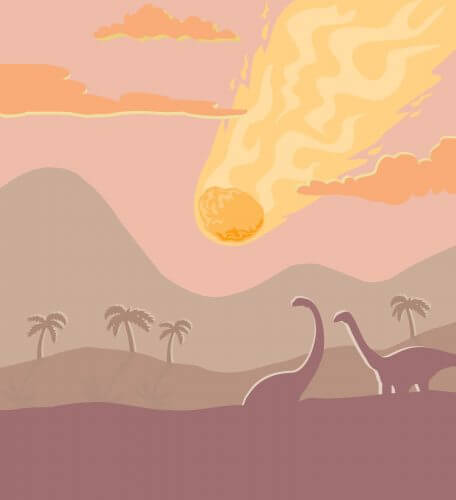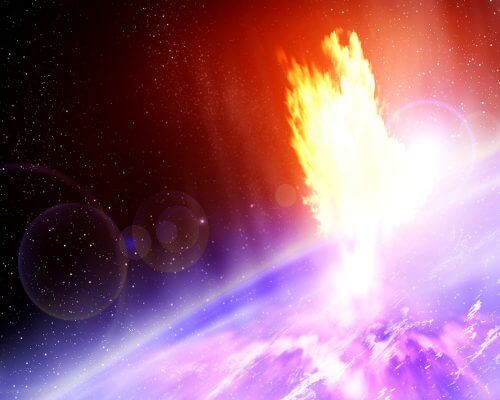Although NASA has detected the largest asteroids approaching Earth, millions of smaller asteroids, which could also threaten our world, have not yet been cataloged

Lee Billings
The US space agency's best plan for protecting the planet depends on a telescope dedicated to detecting asteroids. Will he find funding?
The article was published with the approval of Scientific American Israel and the Ort Israel network
Before the rock that sealed the age of the dinosaurs emerged from space, created a huge crater and sealed the fate of the great reptiles, it was probably an asteroid, whose orbit around the sun brought it occasionally within striking distance of Earth. NASA and other space agencies are currently developing ways to repel or deflect such asteroids, known as NEOs - Near Earth Objects, if they get too close. But the diversion methods will only be useful if we find these dangerous bodies before they find us. However, NASA's search and recovery operation is not progressing as planned.
In 2010, at the request of the American Congress, NASA completed an inventory of more than 90% of the asteroids that orbit close to the Earth and are a kilometer or more in diameter - objects large enough to cause a disaster on a global scale. Today, no such catastrophic-sized object is known to be on a collision course with Earth, but millions of smaller, as-yet-undiscovered NEOs are floating around us in space. Even the smallest ones can cause serious regional problems, such as the 18-meter-diameter rock that exploded over the city of Chelyabinsk in Russia in 2013, injuring at least 1,600 people and causing more than $30 million in damage.
Recognizing the danger inherent in the smaller objects, Congress increased the pressure on NASA and gave it until 2020 to catalog 90% of medium-sized asteroids, at least 140 meters in diameter, that are in close orbit. However, Congress did not allocate additional funding to the space agency to achieve this ambitious goal.
NASA is thus far behind. "With the capabilities we have today, we won't be able to meet the mission until 2020," says Lindley Johnson, acting director of NASA's Nearest Asteroid Survey. The agency relies heavily on three ground-based optical telescopes to hunt for these asteroids, even the largest and closest of which are still dark and hard to spot. This method limits the search to hours when the sky above the observatory is dark and clear. NASA's WISE spacecraft, which surveys the sky at wide angles in the infrared range, also searches for NEOs by detecting the thermal glow they emit, which indicates their existence when the sun heats them. But WISE is expected to cease operations starting in 2017.
These limitations will prolong the survey being carried out today. At the current rate, it will take another 30 to 35 years to find the tens of thousands of medium-sized asteroids that are estimated to be hidden in the solar system and that may come close to Earth. "There's no penalty for not meeting the allotted schedule," says Johnson, "provided there's nothing big that's going to hit us."
Now, the big hope for raising global awareness of asteroids is a new infrared telescope, its name, NEOCam, which is proposed to be built. In September 2015, NASA elevated it to the top of its list of priorities with four other proposals competing for funding under the Discovery program for targeted science missions. During 2016, NASA will select one or two of these proposals for further development for launch as early as 2020.
If NEOCam is launched, it will use cutting-edge infrared sensors to detect ten times more asteroids than have been found so far, according to a 2005 congressional order. Still, there is no guarantee that NASA will choose NeoCam. In the competitive world of federal funding for space science, where investments and risks are high, it can be argued that the money for the mission to locate the dangerous space rocks should come from another source, and not from NASA's Planetary Sciences Division, which has suffered several cuts in the recent federal budgets. Although Congress recently increased financial support for the survey of nearby asteroids from $4 to $40 million annually, the cost of a space mission to search for medium-sized asteroids is estimated at half a billion dollars. Therefore, without another significant budget increase, NASA has no other source of funding besides its planetary science programs.

The fight for funding is not an issue that should arise at all, says Michael A. Hearn, an astronomer at the University of Maryland and former principal investigator of NASA's Deep Impact mission, one of the Discovery missions. Since Congress sees the search as a task assigned to NASA as part of public policy, it must fund the task directly and fully. And he explains: "Can NASA afford not to choose NeoCam? That's exactly what's worrying."
Amy Meinzer, an astronomer at JPL, NASA's Jet Propulsion Laboratory, and NeoCam's principal investigator, emphasizes that the mission is an excellent candidate for the Discovery program because it has defined scientific goals beyond protecting Earth from asteroids. For example, the telescope will study the orbits, shape, composition and self-rotation rate of several nearby asteroids, information that will help researchers trace the history of the solar system and also select new targets for manned and unmanned missions to deep space.
But even if NeoCam's sole purpose was to protect our world, it would still be worth launching it, or another telescope like it, Meinzer argues. "In terms of risk versus consequences, the possibility of an asteroid hitting the Earth is not as worrisome as climate change, for example, which is a very real danger that must be addressed immediately," she says. "But that doesn't mean we shouldn't go out and look for asteroids that could endanger us. The search will greatly advance the quantification of the problem and help us know how concerned we should be. It's a sensible thing to do."

4 תגובות
In fact, a missile tracking technology was developed after an asteroid - the Philae probe. And this was done ten years away from Earth. But this is European technology. If there is information sharing, whatever happens. They will only have to continue from where they left off in Phila.
Another pointless thing. Why should only NASA fund such research. There are about 150 countries in the world. If space exploration is divided into 150 countries it is not noticeable. Americans are not that righteous. They then use the technology for their own commercial application. For example, missiles fast enough to intercept an asteroid, applicable to the military, and infrared radar satellites applicable to the military and civilians.
important action. Also the development of missiles that reach a speed that allows tracking after an asteroid. When it comes there won't necessarily be time to develop. I asked myself what would happen if an asteroid hit. After all, last time the level of intelligence improved and we are a rather cruel species = primitive. Except it took 100 million years. It is not certain that next time the pendulum will probabilistically move to improve intelligence. Therefore a culture that has reached the maturity of being able to defend itself from an asteroid must do so.
Painstaking work
At least they will use the supercomputers, for peaceful purposes